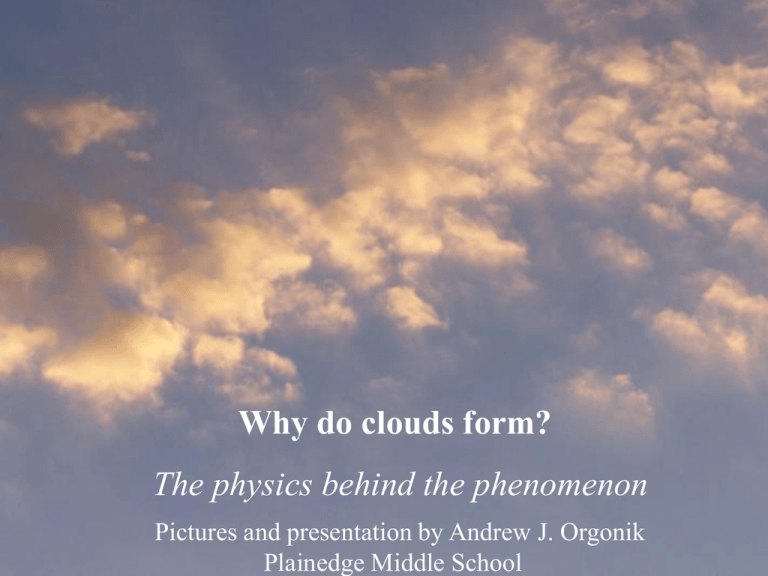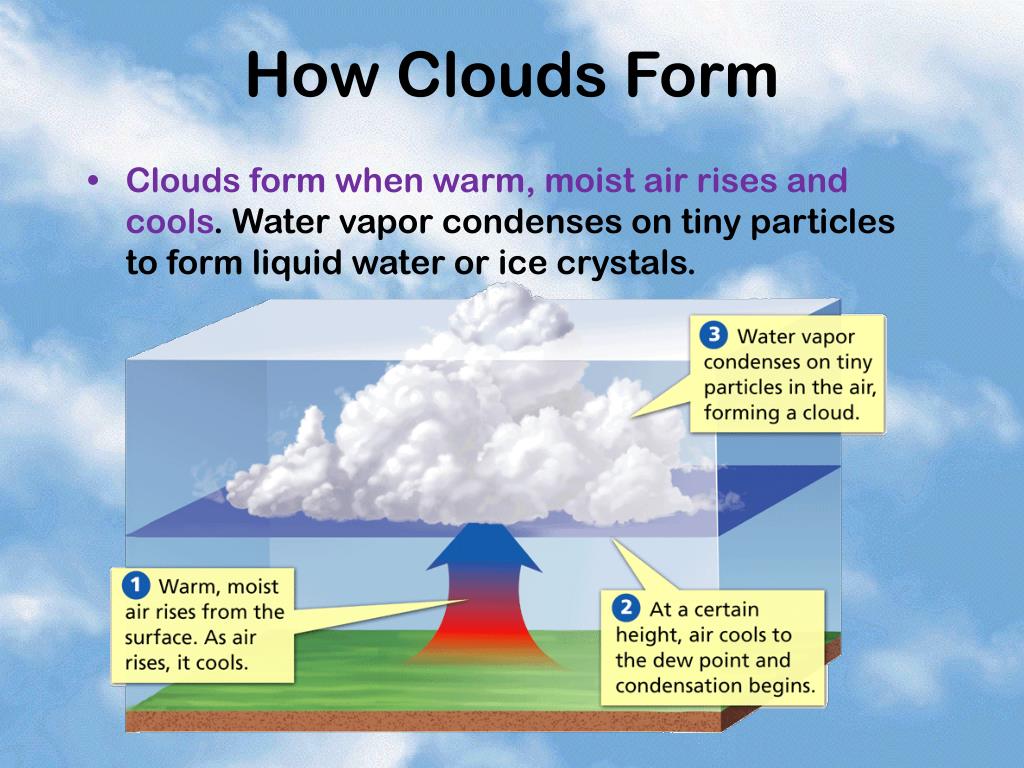Why Do Clouds Form In Front Of A Warm Front
Why Do Clouds Form In Front Of A Warm Front - Clouds often form along a cold front because the cold air mass pushes under the warm air mass, causing the warm air to rise rapidly. As the warm air rises, it cools and condenses,. Why do clouds form in front of a warm front? Yes, clouds can form in front of a cold front as warm air rises and cools, leading to condensation and cloud formation. The upward motion of warm air can create cumulus and. Why do clouds form in front of a warm front? As previously mentioned, one of the differences between a warm front and a cold front is the type of cloud formation. Warm fronts are typically associated with cirrus, cirrostratus, altostratus, and stratus clouds. These clouds form ahead of the warm front and can bring overcast skies and light.
Warm fronts are typically associated with cirrus, cirrostratus, altostratus, and stratus clouds. Why do clouds form in front of a warm front? Clouds often form along a cold front because the cold air mass pushes under the warm air mass, causing the warm air to rise rapidly. Why do clouds form in front of a warm front? As previously mentioned, one of the differences between a warm front and a cold front is the type of cloud formation. These clouds form ahead of the warm front and can bring overcast skies and light. Yes, clouds can form in front of a cold front as warm air rises and cools, leading to condensation and cloud formation. As the warm air rises, it cools and condenses,. The upward motion of warm air can create cumulus and.
These clouds form ahead of the warm front and can bring overcast skies and light. As previously mentioned, one of the differences between a warm front and a cold front is the type of cloud formation. Clouds often form along a cold front because the cold air mass pushes under the warm air mass, causing the warm air to rise rapidly. As the warm air rises, it cools and condenses,. Why do clouds form in front of a warm front? Warm fronts are typically associated with cirrus, cirrostratus, altostratus, and stratus clouds. Why do clouds form in front of a warm front? Yes, clouds can form in front of a cold front as warm air rises and cools, leading to condensation and cloud formation. The upward motion of warm air can create cumulus and.
Why do clouds form?
Why do clouds form in front of a warm front? As the warm air rises, it cools and condenses,. Yes, clouds can form in front of a cold front as warm air rises and cools, leading to condensation and cloud formation. These clouds form ahead of the warm front and can bring overcast skies and light. As previously mentioned, one.
PPT Clouds PowerPoint Presentation, free download ID1897810
The upward motion of warm air can create cumulus and. Why do clouds form in front of a warm front? As previously mentioned, one of the differences between a warm front and a cold front is the type of cloud formation. Warm fronts are typically associated with cirrus, cirrostratus, altostratus, and stratus clouds. As the warm air rises, it cools.
Stationary Front Stationary front, Weather science, Weather fronts
The upward motion of warm air can create cumulus and. Why do clouds form in front of a warm front? As the warm air rises, it cools and condenses,. Why do clouds form in front of a warm front? Yes, clouds can form in front of a cold front as warm air rises and cools, leading to condensation and cloud.
How Do Clouds Form? Boldmethod
Why do clouds form in front of a warm front? These clouds form ahead of the warm front and can bring overcast skies and light. Yes, clouds can form in front of a cold front as warm air rises and cools, leading to condensation and cloud formation. As the warm air rises, it cools and condenses,. Clouds often form along.
Other Cloud Types
Why do clouds form in front of a warm front? Clouds often form along a cold front because the cold air mass pushes under the warm air mass, causing the warm air to rise rapidly. The upward motion of warm air can create cumulus and. Yes, clouds can form in front of a cold front as warm air rises and.
Other Cloud Types
As previously mentioned, one of the differences between a warm front and a cold front is the type of cloud formation. Yes, clouds can form in front of a cold front as warm air rises and cools, leading to condensation and cloud formation. These clouds form ahead of the warm front and can bring overcast skies and light. The upward.
What Weather Happens In A Cold Front
As previously mentioned, one of the differences between a warm front and a cold front is the type of cloud formation. Why do clouds form in front of a warm front? Yes, clouds can form in front of a cold front as warm air rises and cools, leading to condensation and cloud formation. Why do clouds form in front of.
Cloud Types and Atmospheric Layers
Why do clouds form in front of a warm front? Why do clouds form in front of a warm front? Warm fronts are typically associated with cirrus, cirrostratus, altostratus, and stratus clouds. The upward motion of warm air can create cumulus and. As previously mentioned, one of the differences between a warm front and a cold front is the type.
Weather Fronts, Cold Front, Earth Science, Classroom Art, INSTANT
As previously mentioned, one of the differences between a warm front and a cold front is the type of cloud formation. Clouds often form along a cold front because the cold air mass pushes under the warm air mass, causing the warm air to rise rapidly. As the warm air rises, it cools and condenses,. The upward motion of warm.
Atmospheric front vector illustration diagram with cold and warm front
Why do clouds form in front of a warm front? The upward motion of warm air can create cumulus and. Yes, clouds can form in front of a cold front as warm air rises and cools, leading to condensation and cloud formation. These clouds form ahead of the warm front and can bring overcast skies and light. Why do clouds.
Why Do Clouds Form In Front Of A Warm Front?
The upward motion of warm air can create cumulus and. Why do clouds form in front of a warm front? As previously mentioned, one of the differences between a warm front and a cold front is the type of cloud formation. Yes, clouds can form in front of a cold front as warm air rises and cools, leading to condensation and cloud formation.
Clouds Often Form Along A Cold Front Because The Cold Air Mass Pushes Under The Warm Air Mass, Causing The Warm Air To Rise Rapidly.
Warm fronts are typically associated with cirrus, cirrostratus, altostratus, and stratus clouds. As the warm air rises, it cools and condenses,. These clouds form ahead of the warm front and can bring overcast skies and light.




.PNG)
.PNG)



